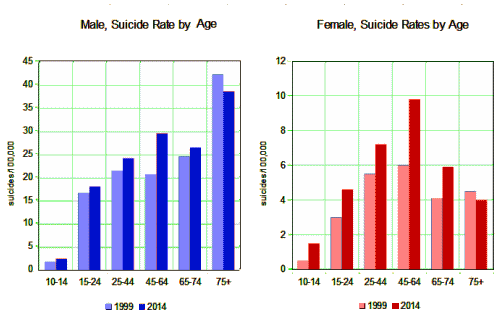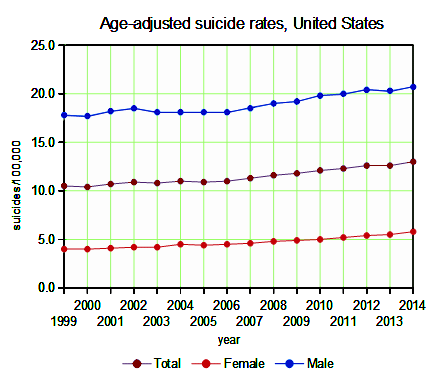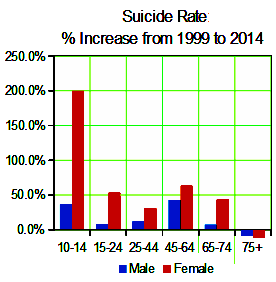Posted on Sunday 8 May 2016
 Usually, when we think of circuits, we think about a roughly circular path that ends in the same place it started, then repeats – like an electrical circuit
Usually, when we think of circuits, we think about a roughly circular path that ends in the same place it started, then repeats – like an electrical circuit  or Escher’s fantastic circuit. But when people are talking about neural circuits, they seem to be using the term more like it’s used in the phrase, circuit boards, those peculiar green thingees that populate the gizmos that make our lives work.
or Escher’s fantastic circuit. But when people are talking about neural circuits, they seem to be using the term more like it’s used in the phrase, circuit boards, those peculiar green thingees that populate the gizmos that make our lives work.
In fact, when experts diagram their neural circuits, the figures even look a bit like those boards with their  discrete elements [chips and the like] connected with rows of rigid copper conductors scurrying from element to element. But as tempting as it is, making analogies between computer hardware [or, for that matter, other electric circuitry] and the brain doesn’t hold much further than this.
discrete elements [chips and the like] connected with rows of rigid copper conductors scurrying from element to element. But as tempting as it is, making analogies between computer hardware [or, for that matter, other electric circuitry] and the brain doesn’t hold much further than this.
by DeLong MR and Wichmann TJAMA Neurology. 2015 72[11]:1354-1360.
IMPORTANCE: The revival of stereotactic surgery for Parkinson disease [PD] in the 1990s, with pallidotomy and then with high-frequency deep brain stimulation [DBS], has led to a renaissance in functional surgery for movement and other neuropsychiatric disorders.OBJECTIVE: To examine the scientific foundations and rationale for the use of ablation and DBS for treatment of neurologic and psychiatric diseases, using PD as the primary example.EVIDENCE REVIEW: A summary of the large body of relevant literature is presented on anatomy, physiology, pathophysiology, and functional surgery for PD and other basal ganglia disorders.FINDINGS: The signs and symptoms of movement disorders appear to result largely from signature abnormalities in one of several parallel and largely segregated basal ganglia thalamocortical circuits [ie, the motor circuit]. The available evidence suggests that the varied movement disorders resulting from dysfunction of this circuit result from propagated disruption of downstream network activity in the thalamus, cortex, and brainstem. Ablation and DBS act to free downstream networks to function more normally. The basal ganglia thalamocortical circuit may play a key role in the expression of disordered movement, and the basal ganglia-brainstem projections may play roles in akinesia and disturbances of gait. Efforts are under way to target circuit dysfunction in brain areas outside of the traditionally implicated basal ganglia thalamocortical system, in particular, the pedunculopontine nucleus, to address gait disorders that respond poorly to levodopa and conventional DBS targets.CONCLUSIONS AND RELEVANCE: Deep brain stimulation is now the treatment of choice for many patients with advanced PD and other movement disorders. The success of DBS and other forms of neuromodulation for neuropsychiatric disorders is the result of the ability to modulate circuit activity in discrete functional domains within the basal ganglia circuitry with highly focused interventions, which spare uninvolved areas that are often disrupted with drugs.
[adapted from the paper]
When I was in medical school, we all learned about some neural circuits – the ones that were known then: like the motor system [how the cortex send messages to the muscles] or the visual system [how the sensors in the eye connect to the visual cortex at the back of the brain]. Those two actually are like wiring diagrams and important for localizing brain lesions [tumors, strokes]. But the only thing I remember knowing about the Movement Disorders like Parkinson;s Disease is that they involved the extrapyramidal [postural] system which had something to do with the mysterious basal ganglia structures deep in the brain.
But now, the basal ganglia thalamocortical circuits are better characterized [above]. The boxes are brain structures/regions and the arrows are the ways in which they act on each other to make the system work. These circuits are spatially distant from the voluntary motor system, so they can be manipulated without loss of function. In this same article, there’s a figure that shows the abnormalities in Parkinson’s Disease, followed by another that shows where the symptoms arise and where treatments act. Now they know enough to successfully treat medication resistant disabling symptoms with surgical lesions or deep brain modulation, putting this basic science to direct clinical use.
So we have a primitive understanding of this particular neural circuit – something like a highway map. It tells how to get from place to place, but not much about what happens in the places the roads connect. There are undoubtedly a myriad of such functional neural circuits with similar nodes, pathways, and feedback loops in our brains just doing their various jobs whether we yet know about them or not. And it’s sure easy to see why neuroscientists of various ilks are so eager to know a lot more about them – and ultimately how to safely tweak them when they sputter and cause dis·ease.
British Medical Journal1 September 2011… The seismic shift had been driven by what he [Tom Insel] described as three “revolutionary changes” in thinking, the first of which was that mental illness was increasingly being recognised as a disorder of brain circuitry, rather than as a chemical imbalance, thanks to neuroimaging techniques and the discovery of some key biomarkers…
Even in his exuberance, I kind of wish Dr. Insel had said "some mental illness might even turn out to be disorders of brain circuitry." But whatever he said isn’t the point. This post is my attempt at an introduction to exploring what I started in weary…, the Decade of “Jumping the Gun“…., and this comment.








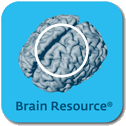 Five years ago, I ran across an Australian company called
Five years ago, I ran across an Australian company called 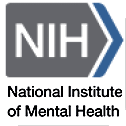 Meanwhile, right around the same time, Tom Insel’s NIMH introduced its Research Domain Criteria [RDoC] [
Meanwhile, right around the same time, Tom Insel’s NIMH introduced its Research Domain Criteria [RDoC] [ My sister, an academic, wrote a paper long ago analyzing Shakespeare’s Hamlet using double-bind theory. I think I would’ve thought it brilliant even if we didn’t share a name and a history. She showed how Hamlet’s soliloquy on suicide applied to all of the characters, each of whom was in a double bind, and how madness and suicide were tempting solutions to the impossible situations each of them faced. I can’t count the number of suicidal patients I’ve seen where parsing the double binds they were experiencing was the key to finding their way out of a suicidal dilemma. I owe both Shakespeare and my kid sister for that insight.
My sister, an academic, wrote a paper long ago analyzing Shakespeare’s Hamlet using double-bind theory. I think I would’ve thought it brilliant even if we didn’t share a name and a history. She showed how Hamlet’s soliloquy on suicide applied to all of the characters, each of whom was in a double bind, and how madness and suicide were tempting solutions to the impossible situations each of them faced. I can’t count the number of suicidal patients I’ve seen where parsing the double binds they were experiencing was the key to finding their way out of a suicidal dilemma. I owe both Shakespeare and my kid sister for that insight. 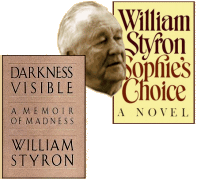 Another great writer who made a major contribution was William Styron, the author of Sophie’s Choice, another variation on the theme of double binds, impossible situations. It’s a must-read book and a must-see movie if you are someone who sees suicidal patients. One will never find two better teachers than William Styron and Meryl Streep. And Styron gave us something else. His Darkness Visible is a first hand account of the pain of Melancholia that makes the why of the suicidal risk in the afflicted patients unforgettable. Another must-read.
Another great writer who made a major contribution was William Styron, the author of Sophie’s Choice, another variation on the theme of double binds, impossible situations. It’s a must-read book and a must-see movie if you are someone who sees suicidal patients. One will never find two better teachers than William Styron and Meryl Streep. And Styron gave us something else. His Darkness Visible is a first hand account of the pain of Melancholia that makes the why of the suicidal risk in the afflicted patients unforgettable. Another must-read.  And speaking of the great writers, Virginia Woolf and her Mrs. Dallaway are in close contention with the next paragraph’s featured author as the best piece of fiction ever written. The book is, in part, about her character, Septimus, a man with a War Neurosis who kills himself to avoid being committed. Some 16 years after writing the book, Woolf herself committed suicide as an episode of her periodic psychotic illness was coming on – likely for the same reason. I have three books on my shelf, each explaining her illness convincingly, each with a different diagnosis [Schizophrenia, Bipolar Disorder, and PTSD]. I can’t summarize her themes – but they’re all there.
And speaking of the great writers, Virginia Woolf and her Mrs. Dallaway are in close contention with the next paragraph’s featured author as the best piece of fiction ever written. The book is, in part, about her character, Septimus, a man with a War Neurosis who kills himself to avoid being committed. Some 16 years after writing the book, Woolf herself committed suicide as an episode of her periodic psychotic illness was coming on – likely for the same reason. I have three books on my shelf, each explaining her illness convincingly, each with a different diagnosis [Schizophrenia, Bipolar Disorder, and PTSD]. I can’t summarize her themes – but they’re all there. William Faulkner is the other contender for the greatest piece of fiction ever written [personal opinion]. It’s two books: Absolom, Absolom and The Sound and the Fury. The books explore the interplay of culture, history, myth, and personal biography as they lead his character Quentin to suicide. I expect that my own history as a Southerner has something to do with my reverence for these two books. But even with that COI declaration, their complex messages have frequently come to mind with suicidal patients and opened up fruitful avenues for exploration.
William Faulkner is the other contender for the greatest piece of fiction ever written [personal opinion]. It’s two books: Absolom, Absolom and The Sound and the Fury. The books explore the interplay of culture, history, myth, and personal biography as they lead his character Quentin to suicide. I expect that my own history as a Southerner has something to do with my reverence for these two books. But even with that COI declaration, their complex messages have frequently come to mind with suicidal patients and opened up fruitful avenues for exploration. 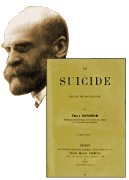 While countless academics and graduate students have had their way with Émile Durkheim’s 1897 Treatise, Suicide, his insights have weathered the century. His study compared suicides among Catholics and Protestants using a scientific method. "Overall, Durkheim treated suicide as a social fact, explaining variations in its rate on a macro level, considering society-scale phenomena such as lack of connections between people [group attachment] and lack of regulations of behavior, rather than individuals’ feelings and motivations."
While countless academics and graduate students have had their way with Émile Durkheim’s 1897 Treatise, Suicide, his insights have weathered the century. His study compared suicides among Catholics and Protestants using a scientific method. "Overall, Durkheim treated suicide as a social fact, explaining variations in its rate on a macro level, considering society-scale phenomena such as lack of connections between people [group attachment] and lack of regulations of behavior, rather than individuals’ feelings and motivations."  We all likely know about Karl Abraham’s and Sigmund Freud’s thoughts about the relationship of anger to depression and suicide. But Karl Meninger‘s 1938 contributions in Man Against Himself are what actually come to mind with every suicidal person I’ve ever seen. Paraphrased, suicidal people want to die [escape], to be dead [relief], and to kill [rage] – and I try to find the personal version of each one of them in every interview. This is a timeless book that isn’t often mentioned these days, but it should be. I had to occasion to reread it a few years ago along with a student, and it was as fresh and useful as it was the first time I read it.
We all likely know about Karl Abraham’s and Sigmund Freud’s thoughts about the relationship of anger to depression and suicide. But Karl Meninger‘s 1938 contributions in Man Against Himself are what actually come to mind with every suicidal person I’ve ever seen. Paraphrased, suicidal people want to die [escape], to be dead [relief], and to kill [rage] – and I try to find the personal version of each one of them in every interview. This is a timeless book that isn’t often mentioned these days, but it should be. I had to occasion to reread it a few years ago along with a student, and it was as fresh and useful as it was the first time I read it.  Albert Camus’ Myth of Sisyphus is a classic on many fronts. While the philosophical point is that Hamlet’s existential dilemma has to be resolved to truly live authentically, to choose to live, I found it helpful with any number of patients. Concretely, I had cases who had a lethal cache of medications as a beloved possession, a talisman, a way of holding out, a way of not fully stepping into life until life proved itself. And there were a significant number who kept their cache secret until they decided to throw them away and step into life after all. That’s a whole psychotherapy topic of its own, but for the moment, suffice it to say that Camus is definitely a required read.
Albert Camus’ Myth of Sisyphus is a classic on many fronts. While the philosophical point is that Hamlet’s existential dilemma has to be resolved to truly live authentically, to choose to live, I found it helpful with any number of patients. Concretely, I had cases who had a lethal cache of medications as a beloved possession, a talisman, a way of holding out, a way of not fully stepping into life until life proved itself. And there were a significant number who kept their cache secret until they decided to throw them away and step into life after all. That’s a whole psychotherapy topic of its own, but for the moment, suffice it to say that Camus is definitely a required read.
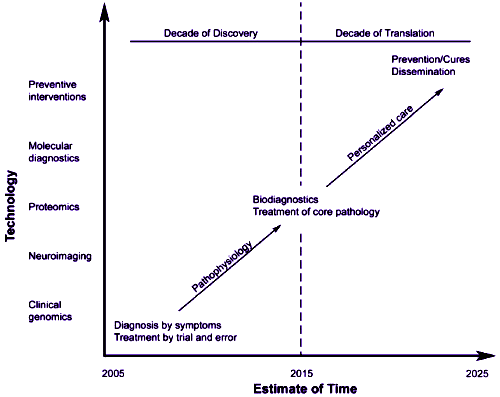
 All Aboard! As the ripples from the recently released suicide figures spread across the water, the usual suspects are being lined up to take the blame: not enough antidepressants, too many antidepressants, biomedical psychiatry, the American Psychiatric Association, the FDA’s Black Box Warning, Tom Insel’s NIMH, Managed Care, the Pharmaceutical Industry, Hospital Corporations, things like 911 or the Iraq War, the great recession, Republicans, Democrats, the NRA. And the non-psychiatric community who have been reimbursed to take over ongoing mental health care [along with their guilds] earned their right to be added to the list: Psychologists, Social Workers, LPCs, etc. Nobody gets off the hook here. There’s room on this train for every one of us. All Aboard!
All Aboard! As the ripples from the recently released suicide figures spread across the water, the usual suspects are being lined up to take the blame: not enough antidepressants, too many antidepressants, biomedical psychiatry, the American Psychiatric Association, the FDA’s Black Box Warning, Tom Insel’s NIMH, Managed Care, the Pharmaceutical Industry, Hospital Corporations, things like 911 or the Iraq War, the great recession, Republicans, Democrats, the NRA. And the non-psychiatric community who have been reimbursed to take over ongoing mental health care [along with their guilds] earned their right to be added to the list: Psychologists, Social Workers, LPCs, etc. Nobody gets off the hook here. There’s room on this train for every one of us. All Aboard!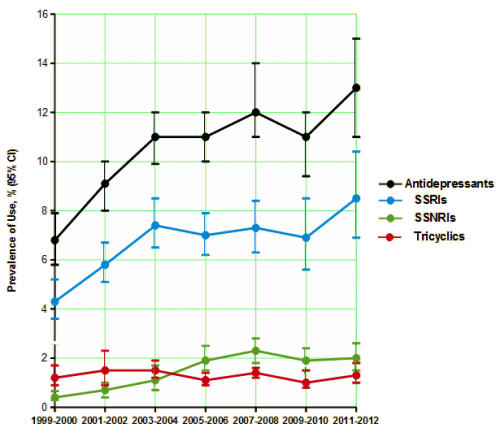
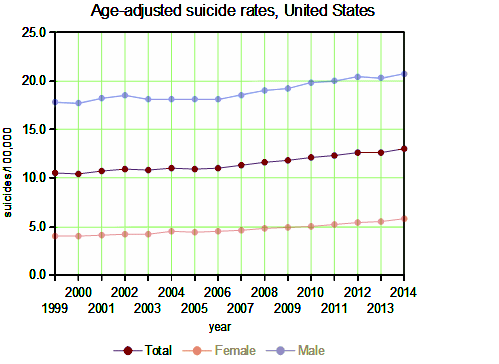
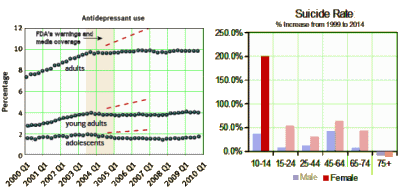
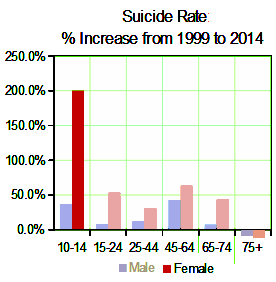 When I read population statistics like the suicide figures in the last post [
When I read population statistics like the suicide figures in the last post [ Tom Insel wears a monocle that always sees the same thing – a future age of understanding of the neurobiological core of mental illness revealed through a series of new technologies responsive to biological interventions, and has relentlessly driven the NIMH towards that goal. He’s even spearheading the development of a new classification of mental phenomena based on the findings from these technologies –
Tom Insel wears a monocle that always sees the same thing – a future age of understanding of the neurobiological core of mental illness revealed through a series of new technologies responsive to biological interventions, and has relentlessly driven the NIMH towards that goal. He’s even spearheading the development of a new classification of mental phenomena based on the findings from these technologies –  Tom Insel has created a National Institute of Clinical Neuroscience with a particular leaning towards psychopharmacological interventions. The focus is on the future discoveries that he feels are bound to come from his efforts. If there’s a model, it’s something like the Manhattan Project or DARPA, the great examples of research teams that created the Atomic Bomb, the Space Program, and the Internet – programs whose success needed a monocle to reach their goal, programs where they really did know where they were going and a lot about how to get there. What the National Institute of Mental Health is supposed to be is a funding agency that makes it possible for creative scientists with good ideas to explore them. That’s not what it is. It’s an agency with a one track mind, and that track is not perpetuated by huge successes. It’s sustained by the monocular view of Dr. Tom Insel and like-minded colleagues who have collectively been pointing us in the same direction for close to a generation without too much to show for it. I don’t personally feel so breathless, more in the range of tired and stuck. I find myself thinking we could use a pair of new glasses with two lenses looking at mental health research with less conviction that it has only one preordained direction and limited dimensions [AKA a rut]…
Tom Insel has created a National Institute of Clinical Neuroscience with a particular leaning towards psychopharmacological interventions. The focus is on the future discoveries that he feels are bound to come from his efforts. If there’s a model, it’s something like the Manhattan Project or DARPA, the great examples of research teams that created the Atomic Bomb, the Space Program, and the Internet – programs whose success needed a monocle to reach their goal, programs where they really did know where they were going and a lot about how to get there. What the National Institute of Mental Health is supposed to be is a funding agency that makes it possible for creative scientists with good ideas to explore them. That’s not what it is. It’s an agency with a one track mind, and that track is not perpetuated by huge successes. It’s sustained by the monocular view of Dr. Tom Insel and like-minded colleagues who have collectively been pointing us in the same direction for close to a generation without too much to show for it. I don’t personally feel so breathless, more in the range of tired and stuck. I find myself thinking we could use a pair of new glasses with two lenses looking at mental health research with less conviction that it has only one preordained direction and limited dimensions [AKA a rut]…
